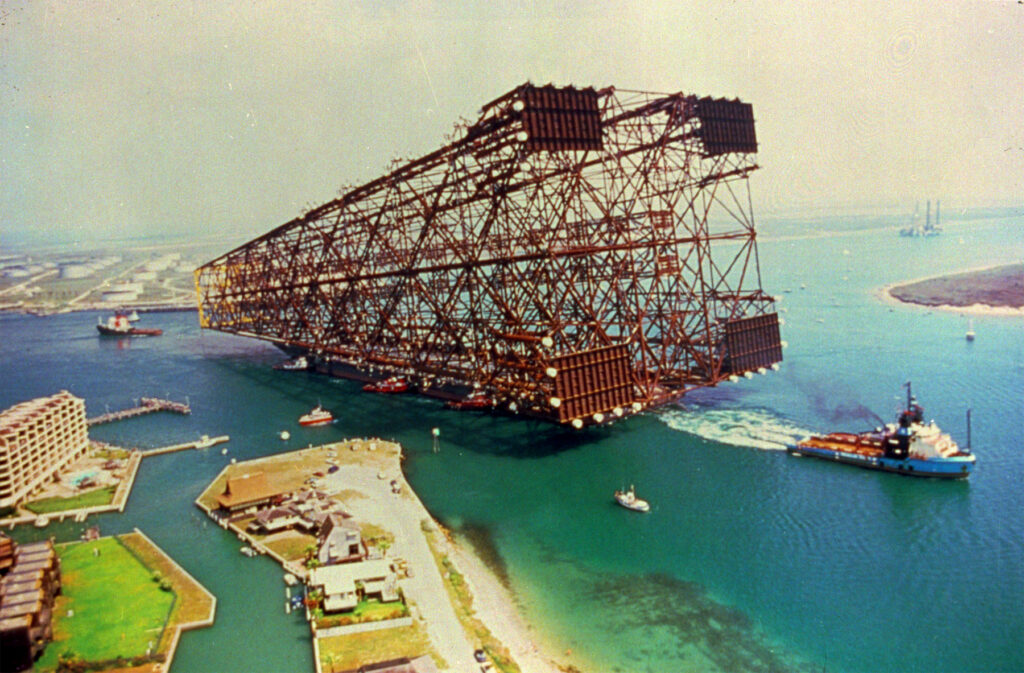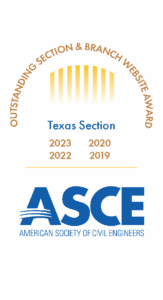Historic Overview of U.S. Fixed Offshore Platforms – Part I
May 2025
By Bryan Wood PE and Allan Hayes PE
This is the first of a three-part overview of the history of U.S. fixed offshore platforms. While this is a highly specialized aspect of engineering involving a comparatively small number of civil engineering professionals, it is an expertise that not only supports an industry that’s critical to the production of a most valuable national resource but also delivers on our ever-increasing demand for energy.
Civil engineering played a key role in developing offshore fixed platforms, initially used for oil & gas drilling in the Gulf of Mexico (GOM) outer continental shelf (OCS). These platforms became a global standard for the oil & gas industry, and more recently, wind farms. Since the first platform was installed in the late 1940s, nearly 4,000-fixed platforms have been built in the GOM alone, contributing 36% of U.S. oil production in 2009.

The modern fixed platform design emerged from innovations in 1946-1948 by energy companies and contractors. Early platforms, like the 1938 Creole platform by Pure Oil & Superior Oil, were extensions of wooden structures used in shallow waters. Kerr-McGee’s 1947 platform, located 10.5-mi. offshore, marked the first “offshore” oil production. Houston’s Brown & Root designed both.
By the early 1950s companies like Superior Oil, Magnolia Oil, and Humble Oil developed more advanced designs, introducing tubular steel piles and templates—known as “jackets”—which supported the topsides equipment. These jackets, built as tall as the water was deep, became the foundation for fixed platforms. By 1953 70-platforms were installed in up to 70-ft. of water. The first fixed platform in Texas was installed in 1955.
Engineers faced challenges due to limited data on meteorological conditions, offshore soil, and continuous wave loading. There was also a lack of heavy-lift equipment for installing large structures offshore.
By the 1970s Texas emerged as a leader in offshore platform design and construction. The Coastal Bend region saw the development of large fabrication yards in Aransas Pass by companies like Brown & Root, ETPM, and Chicago Bridge & Iron. By the mid-1970s Houston-based companies dominated the industry, solidifying Houston’s status as the energy capital.
In 1988 Gulf Marine Fabricators built Shell’s “Bullwinkle” platform, the deepest fixed platform ever installed in the Gulf, at 1,356-ft. The 49,375-ton jacket was the heaviest structure ever moved to sea and won ASCE’s 1989 Outstanding Civil Engineering Achievement award. While floating platforms are now more economical in deeper waters, fixed platforms remain standard in shallower depths.

George R. Brown of Brown & Root and Griff Lee of J. Ray McDermott, both civil engineers, made significant contributions to the field. Brown was honored by the American Petroleum Institute in 1982, and Lee, known as the “father of the fixed platform,” received ASCE’s Wall of Fame award in 2012. The Offshore Technology Conference (OTC) is held annually in Houston to honor the achievements of the industry.



